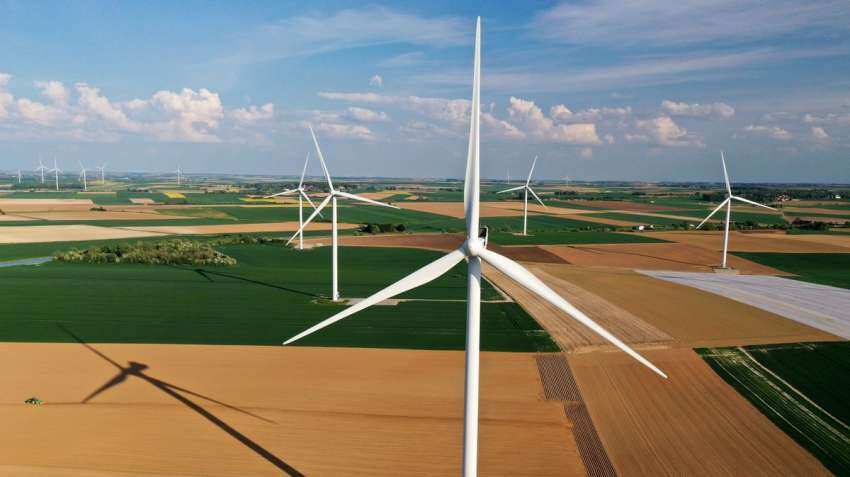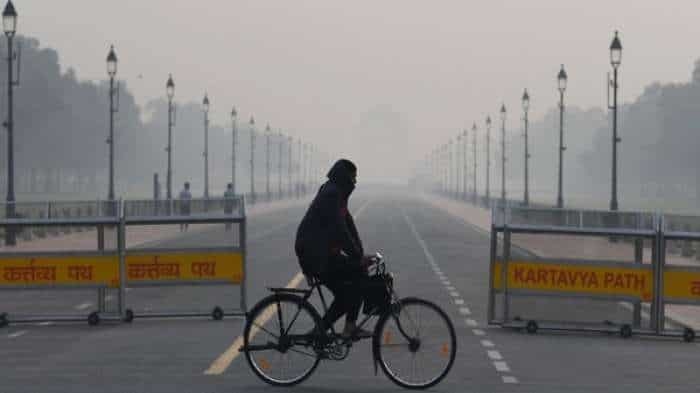Renewable energy sector to boom with likely investments of over USD 25 billion in 2023
India would have to add at least 25GW of renewable energy capacity per annum for eight years continuously to achieve the 500 GW target by 2030.

With an oil price shock threatening to derail economies globally, the focus has shifted to renewable energy with over USD 25 billion or Rs 2 lakh crore investment planned in India for using sunlight, water and air to produce energy.
Oil and gas prices shooting through the roof in 2022 in the aftermath of Russia's war in Ukraine sent governments in import-dependent nations like India scrambling for options.
Not just imports but a shift to renewables is also seen as a way to cut carbon footprint and meet net-zero targets. And so the government in 2022 aggressively pushed for the adoption of electric vehicles, the production of green hydrogen, manufacturing of solar equipment and energy storage in pursuit of its ambitious 500 GW renewable capacity target by 2030.
India would have to add at least 25GW of renewable energy capacity per annum for eight years continuously to achieve the 500 GW target by 2030.
At present, India has around 173GW of non-fossil fuel based clean energy capacity which includes about 62GW of solar, 42GW of wind energy, 10GW of biomass power, about five GW of small hydro, 47 GW of large hydro and seven GW of nuclear power capacity.
Talking to PTI, Union power and new & renewable energy minister R K Singh stated that the investment in the renewable energy sector could be around USD 25 billion in 2023.
Elaborating further he said, "We have to achieve a 500 GW target (of clean energy by 2030). Currently, we have a capacity of 173 GW (including large hydro and nuclear power). Capacity under construction is around 80 GW. It takes it to 250 GW. So we have to do another 200 GW by 2030."
He explained further that India needs to add about 25 GW of renewable energy capacity per annum for the next eight years, which would require an investment of Rs 1,25,000 crore or USD 15 billion to 16 billion factoring in Rs 5 crore requirement per MW of capacity addition.
Singh further said: "We are also doing (solar) manufacturing, which will also attract investment. Currently, a capacity worth Rs 8,780 crore is under construction. It includes polysilicon and module.
We are bringing the PLI (Production Linked Incentive) scheme worth Rs 19,500 crore, under which around 40GW capacity will be developed. We are also doing offshore wind of 4GW, which will also fetch billions of dollars."
The government is also focussing on green hydrogen with its National Mission on Green Hydrogen. The bids are expected for the manufacturing of electrolysers next year. That would also bring investment in the clean energy sector.
Solar Power Developer Association (SPDA) has suggested, "Green ammonia and green hydrogen production should be included under infrastructure sector definition, then, investment in these sectors also can be made through FVCI (Foreign Venture Capital Investor) route. This will give more flexibility to foreign investors and attract investment."
In 2022, the government provided an additional allocation of Rs 19,500 crore to the production-linked incentive (PLI) scheme 'National Programme on High-Efficiency Solar PV Modules'. The bids are already issued this year and would be allocated in 2023.
In 2021, the government introduced the PLI with an outlay of Rs 4,500 crore to support and promote the manufacturing of high-efficiency solar photovoltaic (PV) modules.
These include the upstage vertical components like cells, wafers, ingots and polysilicon. The initiative is expected to reduce import dependence in the solar PV sector.
Gyanesh Chaudhary, Vice Chairman and Managing Director, Vikram Solar told PTI, "Investment in India's renewable energy sector grew more than 125 per cent YoY (Year on Year) to touch a record USD 14.5 billion in FY22. India has already crossed 11 GW capacity installation in the first 9 months of the year (2022-23)."
He listed some of the challenges including continued solar import (80-90 per cent still imported, worth USD 3.2 billion in FY22) and expensive raw materials (50 per cent price rise in domestic panels).
He stated that the hike in shipping costs adds to module and overall project cost.
Besides, Indian rupee falling against USD will lead to exchange rate variations between bidding and finalisation of projects, he added.
He also pointed toward the lack of flexible financing solutions and lack of tax exemptions and subsidy availability for R&D (in renewable energy)
"Although the challenges are there, the growth story presents a compelling argument for domestic manufacturers like Vikram Solar to focus on innovation and capacity expansion," he added.
The government is also focussing on harnessing the potential of setting up large hydropower projects in the country. Large hydro has already been given renewable energy status like small hydro which has a capacity of up to 25MW.
Earlier this month, the government waived off ISTS (Inter-State Transmission System) or wheeling charges on the transmission of electricity generated from new hydro power projects for 18 years from the date of commissioning.
Hydro power projects, being clean, green and sustainable will be of paramount importance in India's clean energy transition journey. They are also essential for the integration of solar and wind power, which are intermittent in nature.
In acknowledgment of the inherent qualities of hydro power, the government of India declared hydro power projects as a renewable source of power in March 2019. However, waiver of inter-state transmission charges provided to solar and wind projects had not been extended to hydro power projects.
In order to remove this discrepancy and to provide a level-playing field to hydro projects, the government has now decided to extend the waiver of ISTS charges on the transmission of power from new hydropower projects, for which construction work is awarded and PPA (power purchase agreement) is signed on or before June 30, 2025.
The government has also planned an investment of over USD 30 billion or Rs 2.44 lakh crore for creating a robust transmission system commensurate with its target of achieving 500 GW of clean energy by 2030.
A high-level committee prepared a detailed plan titled 'Transmission System for Integration of over 500 GW RE Capacity by 2030' in consultation with states and other stakeholders.
The plan is a major step towards achieving the goal of integrating 500 GW of non-fossil fuel-based capacity by 2030 by providing a broad plan of the required transmission system for having 537 GW of Renewable Energy capacity by 2030.
The planned additional transmission systems required for having 500 GW of non-fossil fuel include 8,120 ckm (circuit kilometer) of high voltage direct current transmission corridors (+800 kV and +350 kV), 25,960 ckm of 765 kV ac lines, 15,758 ckm of 400 kV lines and 1,052 ckm of 220 kV cable at an estimated cost of Rs 2.44 lakh crore.
"The year 2022 has been a remarkable year for renewables and energy transition in India. While renewable energy crosses over 165 GW of installations, the cumulative SECI bids reached over 42
GW. With our vision to commission 500 GW of renewable energy by 2030 and net zero by 2070 at COP26, this will require a significant step up of our on-ground efforts," said Girish Tanti, Executive Vice Chairman, Suzlon Group.
He further stated that he believes 2023 is positioned to become one of the most crucial milestones in "accelerating our energy transition journey".
Harmonizing all renewable energy policies thereby evening out the benefits and support provided to various renewable sources will be key in creating equal opportunities for all renewable sources to participate in India's energy transition, he opined.
Get Latest Business News, Stock Market Updates and Videos; Check your tax outgo through Income Tax Calculator and save money through our Personal Finance coverage. Check Business Breaking News Live on Zee Business Twitter and Facebook. Subscribe on YouTube.
RECOMMENDED STORIES
04:37 PM IST











 India's renewable energy capacity addition doubled to 15 GW in April-November: Pralhad Joshi
India's renewable energy capacity addition doubled to 15 GW in April-November: Pralhad Joshi NTPC Renewable Energy bags 500-MW solar project in SECI auction
NTPC Renewable Energy bags 500-MW solar project in SECI auction  BrightNight plans Rs 15,000 crore investment in Rajasthan
BrightNight plans Rs 15,000 crore investment in Rajasthan  Waaree Energies bags 524 MW solar module supply orders
Waaree Energies bags 524 MW solar module supply orders  O2 Power inks pact to supply 100 MW electricity to East Central Railways
O2 Power inks pact to supply 100 MW electricity to East Central Railways